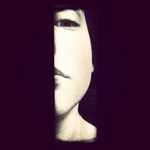My family history, this book has a detailed account of my family some only going to Grandparents, but on my father’s side I have the family charts into the 1700’s. I am Metis. My father is Metis and his father and so on, but that never meant to much to me until I was in my 20’s. I grew up in the Vancouver area and then in the Okanagan of BC and even though I knew I was Metis, even my dad didn’t know much about our history. I remember asking him as a teenager how come he didn’t know much about it and his response was that after his family (parents and siblings) left Saskachewan things changed for them and his mom and dad never really talked about their past or heritage. As a teenager all I knew was that my great, great, great grandfather was first cousins with Louis Riel… somehow that meant I was Metis. When I was in my 20’s, I began to get involved with the Metis Associations, but never really felt like I knew much about traditions etc as I grew up in a city and not a small Metis community. I learned about Aboriginal traditions, but they seemed more First Nations than anything to do with me. Now I am taking a course on the Metis of Canada and I am becomming aware of maybe why my ancesters never talked about some things, and how my family fits. I have been able to look up scrips and find my great great great grandfathers and read about names in my family tree and it’s been an eye opener. I see how the Metis were treated and what they fought for and when things changed and moved for them and I look at the dates and realize “hey that is when I was a teenager and didn’t know anything” or ” hey, that’s when being Metis started to mean something to me” I have never been into geneology too much, but learning the history of my family has been very interesting.
Filed Under
Other moments in The Pas
-
prairie first nations, indigenous, Brandon Story Class
The Seven Teachings are part of the First Nations Peoples lives, living on the Prairies here in Canada
in The Pas, Canada -
prairie first nations, indigenous, Brandon Story Class
Suicide on reserves
in The Pas, Canada -
Brandon Story Class, indigenous, prairie first nations
Alcoholism on reserves
in The Pas, Canada -
prairie first nations, Brandon Story Class
Pike Lake Culture Daylocal artist: Solomon Colomb 2002
in The Pas, Canada -
prairie first nations, Brandon Story Class
A look back to The Oka Crisis, 13 years ago.Part of my Winter Count
in The Pas, Canada -
Brandon Story Class
Pearl exclaims;"Can I help you with your homework"
in The Pas, Canada -
prairie first nations, Brandon Story Class
The ulu knife, traditionally the handle is made from caribou antler or walrus ivory. The blade was made of slate, until metal was introduced during the Fur Trade.
in The Pas, Canada -
prairie first nations, Brandon Story Class
Art from Baffin Island.
in The Pas, Canada -
prairie first nations, indigenous, Brandon Story Class
White Feather
in The Pas, Canada








